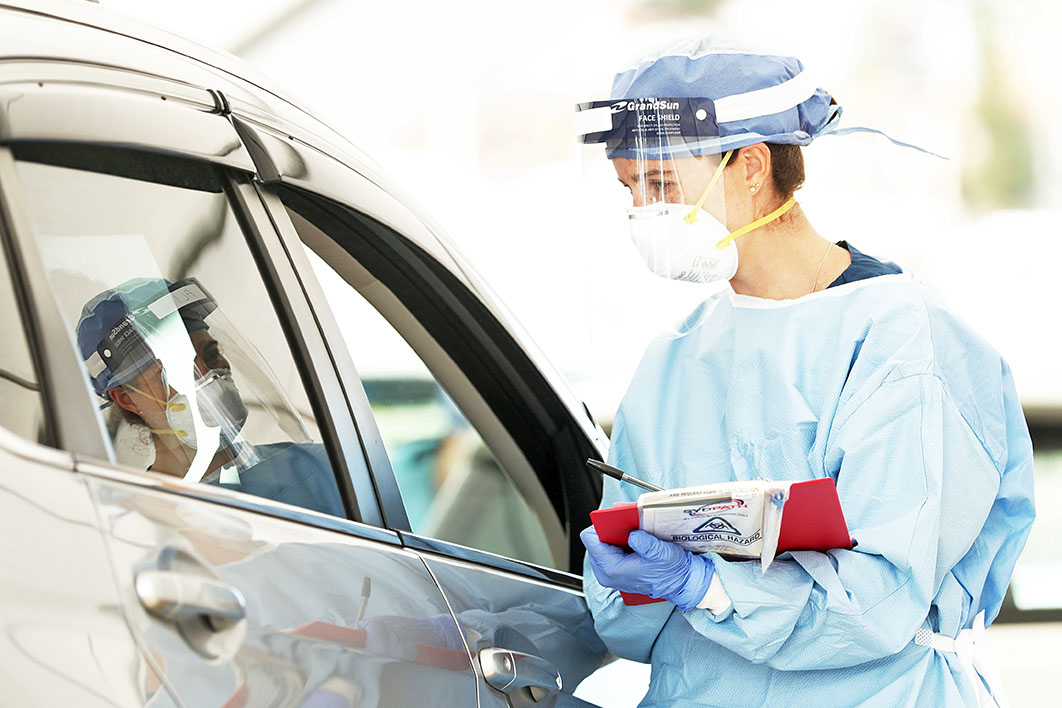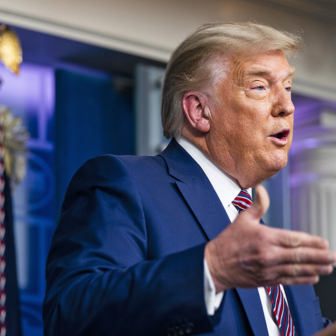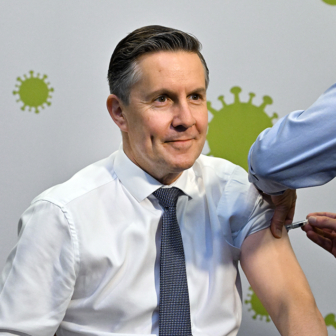It is just four months since we first heard of the virus we now know as SARS-CoV-2, and less than three months since a pandemic was declared. Since then, all our lives have changed and our understanding of epidemiology, infection control, and the limits of medical knowledge and treatment has increased. This is a new virus, with many unexpected features; it has challenged even the richest nations and the best-prepared healthcare systems. Yet even as scientists and public health officials struggle to understand the virus, great progress has been made in both practical management and better understanding its prevention, mode of action and treatment. SARS-CoV-2 is the subject of international research on an unprecedented scale.
What has been learned and how is that knowledge being used?
The story of the origin of the coronavirus pandemic is now fixed in the public mind. In late 2019, it goes, a new virus was generated as wild animals (pangolins are often invoked) and humans came together in the Wuhan wet market.
In reality, we don’t know exactly what happened — and it is important to trace the genesis of this virus because it’s the key to stopping the next pandemic. It now seems most likely that the coronavirus originated in bats, which are natural reservoirs for viruses. But we still don’t know which species served as an intermediate host before the virus moved to humans. Bats were where the 2002 SARS outbreak started, moving to civets before infecting humans. As the detection of the new virus in pets and a tiger in the Bronx zoo shows, coronaviruses like SARS-CoV-2 are circulating all the time in the animal kingdom.
There is definitely some sort of connection to the Wuhan wet market, which was the first epicentre of the pandemic, but the first recognised case in Wuhan had no clear link and pangolins are unlikely to be involved.
How and when the virus arrived in the United States is also unknown. Recently released evidence overturns the idea that the first infections were in a Washington state nursing home and the first coronavirus-related death in Seattle on 29 February, shifting the timeline of the virus’s spread to weeks earlier. Two Californians who died in their homes in early to mid February were infected, which means the virus was circulating in California for at least a month before it was detected in Washington state.
New York City announced its first confirmed Covid-19 case on 1 March, but modelling suggests nearly 11,000 people in the city could already have been infected. Moreover, genetic analyses show that most infections in New York came from multiple locations in Europe rather than directly from China. No one then was paying attention to the planes flying into New York from these locations.
This undercover start — and subsequent difficulties in containing it in countries like the United States, Italy and Spain — reflects Covid-19’s long and variable incubation period (the time between exposure and first symptoms is typically five to six days but may range from two to fourteen days) and the fact that some infected people have only very mild symptoms or none at all. Recent studies suggest about 40 per cent of those infected are “silent carriers,” although one study from China put this as high as 80 per cent.
Children and young, healthy people seem more likely to be asymptomatic, but it is unclear if this also means they are not infectious. French researchers found one child who was simultaneously infected with coronavirus, influenza virus and the common cold. Both of his siblings caught the latter two viruses, but the research subject didn’t pass coronavirus on to either of them, nor to any of the other 172 people he had contact with.
A small study by the National Centre for Immunisation Research and Surveillance came to the same conclusion — that children are unlikely to transmit coronavirus between each other or to adults. This report is being cited by the federal government as it advocates the reopening of schools.
Infectious disease experts are still trying to understand this variability in who gets infected and who shows symptoms, but the lesson learned is that widespread testing is essential to understand the full extent of infection in the community.
The SARS-CoV-2 virus is most commonly found in the upper respiratory tract and in fluids from the lungs. It spreads primarily through infected droplets generated by coughing and sneezing, or when hands touch surfaces or objects contaminated by these droplets and particles. Some studies have suggested that aerosol transmission is plausible, though others dispute this.
It is not clear whether pregnant women can pass the infection on to their babies. While several cases of newborns with coronavirus have been reported, no traces of the coronavirus have yet been found in the placenta or the umbilical cord, making it unlikely that a mother can infect her child while it is still in the womb. This could change as more information becomes available.
Viable, infectious SARS-CoV-2 has also been isolated from blood, urine, and faeces. It is not yet known whether other non-respiratory body fluids from an infected person — vomit, breast milk or semen, for instance — can be sources of infectious SARS-CoV-2.
Infectivity is measured by the reproduction number (the number of people an infected person will pass the illness to). For SARS-CoV-2 this is 2.0 to 2.6 – higher than the flu (1) but considerably less than measles (15). Scientists don’t know how many virus particles of SARS-CoV-2 are needed to trigger infection, and the extent to which viral load is an indicator of the severity of disease is unclear. Two studies in the Lancet reported that people who develop more severe pneumonia had, on average, higher viral loads when they were first admitted to hospital; but another study found that some asymptomatic patients had similar viral loads to patients with Covid-19 symptoms.
The virus enters the body through the mucous membranes of the face (eyes, nose and mouth), which provide a direct pathway to the throat and lungs. The path from the point of infection varies enormously and is determined by each individual’s immune system.
About 80 per cent of people with Covid-19 recover without needing any specialist treatment. But sometimes, even in otherwise healthy patients, the immune response is excessive or prolonged and causes what’s known as a “cytokine storm.” In these cases, the inflammation and organ damage can be fatal.
The most common cause of death in people with Covid-19 is acute respiratory distress syndrome, or ARDS, the result of a build-up of fluid in the lungs. Elderly people and those with chronic lung disorders are more likely to develop ARDS. A predominant theory is that these patients have increased levels of angiotensin converting enzyme 2, or ACE2, which acts as a receptor for the virus. There is confusion about whether the infection is amplified by a class of drugs used to treat hypertension that affect ACE2 levels and are often taken by patients most susceptible to coronavirus.
Some evidence also suggests that in severe cases, the virus may enter the brain through the olfactory nerve in the nose and damage that part of the brain that controls breathing.
One of the most shocking aspects of this pandemic is how people become so ill so quickly. Clinicians are just beginning to recognise that Covid-19 pneumonia initially causes a form of oxygen deprivation called “silent hypoxia” because it is insidious and hard to detect, and patients don’t feel short of breath. By the time their situation is recognised, patients’ oxygen levels are seriously compromised. Then the only treatment is mechanically to take over the patient’s breathing. Simple monitoring of blood oxygen levels can prevent this.
A striking feature of Covid-19 is that it disproportionately affects males. A meta-analysis of 206,128 cases around the world found that, although the number of infections was roughly equal between sexes, men were more than twice as likely to get so sick they needed intensive care and about 60 per cent more likely to die.
Two previous emerging coronavirus diseases, SARS and MERS, also disproportionately affected men, as, to a lesser extent, does influenza. This may be related to the very different immune systems of men and women and/or hormonal differences. Some have proposed a role for smoking, as smoking rates are universally higher in men. Another possibility is that men — especially older men — are in generally worse health than women. When the authors of a New York study factored prior health status into their analysis, they found that sex was no longer one of the main risk factors for severe Covid-19.
A prime risk factor for severe complications from Covid-19 is obesity. Although people with obesity frequently have other medical problems (such as heart disease and diabetes), studies indicate that obesity in and of itself is exceeded only by age as the most significant risk factor — and, surprisingly, is more important than asthma and other chronic respiratory conditions — for hospitalisation. Young adults with obesity appear to be at particular risk.
It is postulated that in coronavirus-infected patients with obesity, there is greater inflammation of adipose tissue, the fatty layer under the skin and around internal organs, and this contributes to immune activation, an enhanced cytokine storm, and increased virus shedding. There is a view that obese people shed virus for longer and that their quarantine should therefore be longer.
A shocking aspect is the racial disparities seen in coronavirus hospitalisations and deaths, especially obvious in the United States and Britain. Data from the US Centers for Disease Control and Prevention show that the rate of recorded Covid-19 deaths among African Americans (92.3 deaths per 100,000 population) and Hispanics/Latinos (74.3) were substantially higher than for white (45.2) or Asian (34.5) Americans.
Reports from cities including Chicago, New York and New Orleans indicate even greater racial disparities in death rates. A Washington Post headline described the virus “ravaging one of the country’s wealthiest black counties.” The situation appears to be worse for Native Americans living on tribal lands. Of the first 2249 patients with confirmed Covid-19 in Britain, 35 per cent were non-white, much higher than the proportion of non-white people in the population. Sadly, the fate of many patients, especially people of colour, is sealed by pre-existing social determinants of health and established racial inequalities.
While there is growing understanding of the risk factors and causative mechanisms of Covid-19 disease, this has yet to deliver a vaccine to prevent it or pharmaceutical treatments for the pneumonia it causes.
In desperate bids to find these treatments, researchers, clinicians and pharmaceutical companies around the globe have launched a raft of studies and clinical trials investigating experimental drugs, a decades-old malaria medicine, a veterinary drug that also kills head lice and the parasites that cause river blindness, and cutting-edge therapies that have worked for other conditions such as HIV and rheumatoid arthritis.
The value of this work is undermined by a lack of national, let alone international, strategies, leading to overlapping efforts and an array of small-scale trials that will not lead to definitive answers. No agreements have been reached about how to prioritise efforts, which data to collect and how to share findings to get answers faster. It’s been described by one observer as “chaotic.” A key hedge to the many trials is that there is no recognised “standard of care” against which to compare the drugs being studied.
Such results as have been delivered to date are, not surprisingly, either negative or inconclusive. Regulators have warned about the risks of the malaria drug hydroxychloroquine (much promoted by Donald Trump), and early reports from clinical trials of this drug and Remdesivir (a failed candidate for treating Ebola) have been damning, although other studies are still under way. Published results from a trial of the combined antiretroviral drug lopinavir/ritonavir also showed no improvement in clinical outcomes. A study of the head lice drug ivermectin is proceeding despite warnings that the dosage needed to kill coronavirus is up to one hundred times higher than approved doses.
The real quest is for a vaccine to prevent infection. Many vaccine prospects are being explored using a wide range of research approaches. Fortunately, the international cooperation has been much greater than for pharmaceuticals, as evidenced by the work of the Coalition for Epidemic Preparedness Innovations. One survey of the Covid-19 vaccine development landscape found 115 vaccine candidates. Of the seventy-eight confirmed active projects, seventy-three are currently at exploratory or preclinical stages and only a handful have moved into clinical development and testing. Hanging hopes on the development and large-scale production of a safe and effective vaccine within the next few years is an exercise in unbounded optimism.
As a way of buying time, researchers in four countries will start a clinical trial of an unorthodox approach testing the century-old BCG vaccine, used against tuberculosis, to see if it can generate a non-specific immune response that will fight off the coronavirus. Options for repurposing other vaccines are also being explored.
Most research funding is being spent on finding a vaccine and effective drugs. That effort is vital, but it must be accompanied by research on how to target and improve the non-drug interventions that are the only effective interventions so far.
The only established treatment for Covid-19 is supportive — basically the provision of oxygen via masks, respirators, ventilators and, in extreme cases, extracorporeal membrane oxygenation to help maintain high oxygen levels until patients’ lungs have recovered sufficiently for them to function normally.
These latter two treatments are resource-intensive and expensive forms of life support, with the potential for causing severe complications including infection and haemorrhage. Ventilating patients with Covid-19 seems to drive the infection deeper into the lungs and saves few lives. Avoiding the use of a ventilator is better for both patients and the healthcare system, so there is an urgent need for controlled clinical trials of ventilation versus non-invasive oxygen therapy in these patients.
In terms of prevention, the only approaches currently available require physical isolation, hand hygiene and protective equipment like masks. These interventions have been assessed by only a handful of studies, most of which have been assessed as of low quality or small sample size.
Work is under way to understand if the levels of immunity in individuals and the population after infection are protective, and how long that immunity could last. With no widespread inherent immunity to a new virus like SARS-CoV-2, scientists are starting from ground zero.
Doctors examining the blood of patients recovering from a Covid-19 infection are finding that fairly high levels of neutralising antibodies are made by the immune system. These antibodies coat an invading virus at specific points on its surface, blocking its ability to break into cells and thus conferring immunity. Most virologists believe that immunity against SARS-CoV-2 will last only a year or two, in line with other coronaviruses that infect humans. That means that even if most people do eventually become exposed to the virus, it is still likely to become endemic, with seasonal peaks of infection.
Current antibody tests, which show who has been infected, are often inaccurate, and it is not clear whether a positive result signals immunity to the coronavirus. The World Health Organization has warned against relying on these tests for policy decisions such as the introduction of “immunity passports.
It is possible that antibodies can be turned into therapies. Plasma containing the antibodies from recovered patients is transfused to gravely ill patients in an experimental treatment known as convalescent plasma therapy. Early results from a small number of Chinese patients, published in late March, were promising. Doctors have been using convalescent plasma transfusions to help patients fight diseases as far back as the Spanish flu of 1918. More recently, the procedure has been used in patients with SARS, Ebola, and H1N1.
Both vaccine development and plasma therapy depend on the virus not mutating in a way that modifies the shape of its antigens. Several studies have also established the relative stability to date of the SARS-CoV-2 genome, perhaps because the virus is encountering few immune hosts who could halt its spread.
Researchers have shown that two major strains of SARS-CoV-2 now exist. The newer and more aggressive L type accounts for about 70 per cent of the analysed cases, while the rest are linked to the older S type version. The mutations don’t seem to have affected the S1 spike protein, which is the antigen most people are targeting for vaccine production. But another study from China suggests that the virus’s ability to mutate has been vastly underestimated, providing laboratory evidence that certain mutations could create strains deadlier than others. Much more research is needed in this area, including monitoring virus samples from different locations over time to track mutations.
Finally, what do Covid-19 recoveries look like, and what are we to make of the host of side effects that are now appearing? On these questions, evidence is thin.
The recovery path for Covid-19 patients is very slow. Most cases recover within three weeks, but they can take much longer and be much more complicated and less linear for the sickest patients. Weaning patients off ventilators can take several weeks, and patients who have been in intensive care can experience delirium and symptoms of post-traumatic stress syndrome.
Once thought to be a pathogen that primarily attacks the lungs, the virus now seems to inflict long-lasting damage on many of the body’s organs. Reports are coming in of kidney damage requiring dialysis; strokes, even in young people who had only mild symptoms; Guillain–Barré syndrome, blood-clotting complications; neurological problems; and liver and intestinal damage. Doctors in Britain, Italy and Spain have been warned to look out for an inflammatory condition (perhaps the rare Kawasaki disease) in children, which is possibly linked to coronavirus. For many patients, surviving Covid-19 means a long road back to health.
How the pandemic ends will depend on medical advances still to come and perhaps yet to be predicted. In the interim, for communities and nations, surviving depends on individual behaviours and compliance with evidence-based guidelines. •




